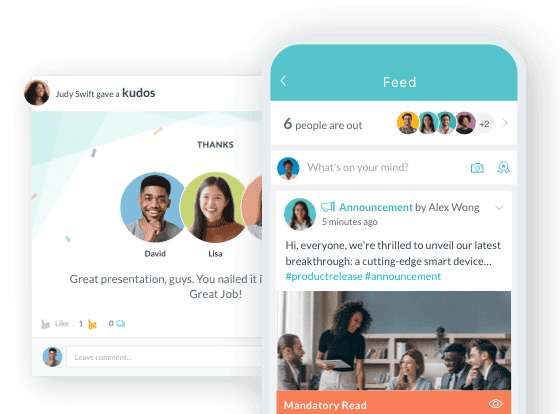12 Tips to Improve Your Work-Life Balance
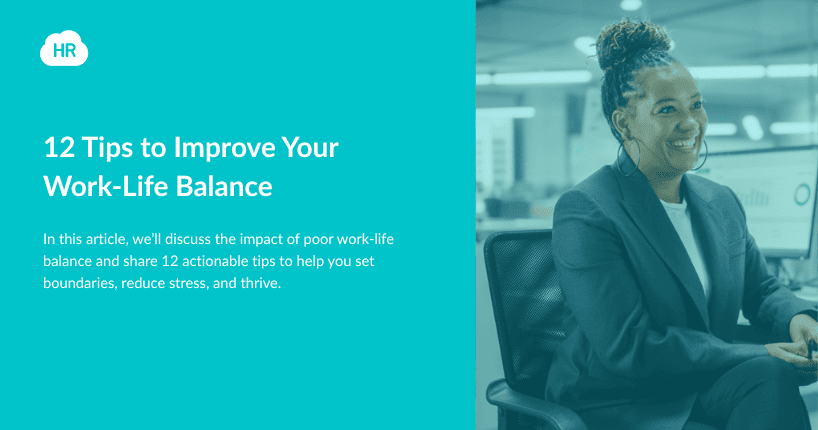
- Work-Life Balance and Why It’s Important
- Signs of an Unhealthy Work-Life Balance
- Ways to Improve Work-Life Balance
- 1. Time Management
- 2. Know Your Priorities
- 3. Establish a Realistic Schedule
- 4. Set Boundaries
- 5. Take Breaks
- 6. Use Vacation Days
- 7. Create a Flexible Schedule
- 8. Find a Job You Love
- 9. Make Time for Family and Friends
- 10. Exercise and Meditate
- 11. Cultivate Your Hobbies
- 12. Provide Honest Feedback
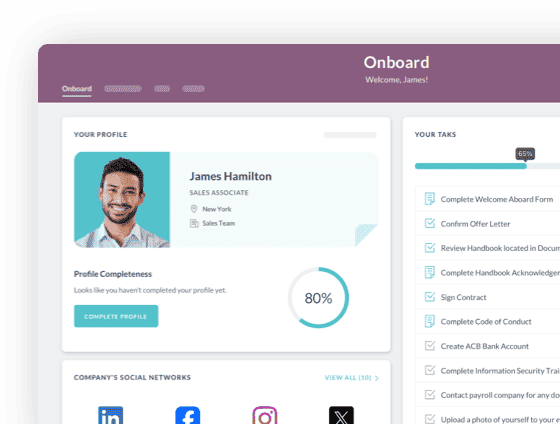

 Cut onboarding time
by 60%—here's the
Ultimate Checklist
that helped do it.
Cut onboarding time
by 60%—here's the
Ultimate Checklist
that helped do it.
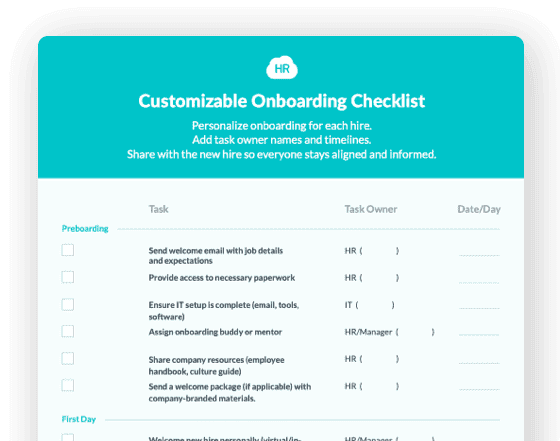
Making enough time for both your professional life and personal life (aka work-life balance) can be hard, especially as hustle culture is gaining popularity to make ends meet, but it’s not impossible.
The concept of balancing work and life was introduced during the 1980s as a way to allow for more time for family and hobbies outside of work. But in a post-pandemic world, it feels like work-life balance may be harder to attain.
For example, in the first 8 weeks of lockdown, employees worked 49 minutes longer per day on average, and sent about 8% more emails after-hours, according to the National Bureau of Economic Research.
Below, we’ll discuss the impact of having a poor work-life balance before giving you tips on how to improve it and achieve work-life integration, along with exploring the numerous work-life balance benefits.
Work-Life Balance and Why It’s Important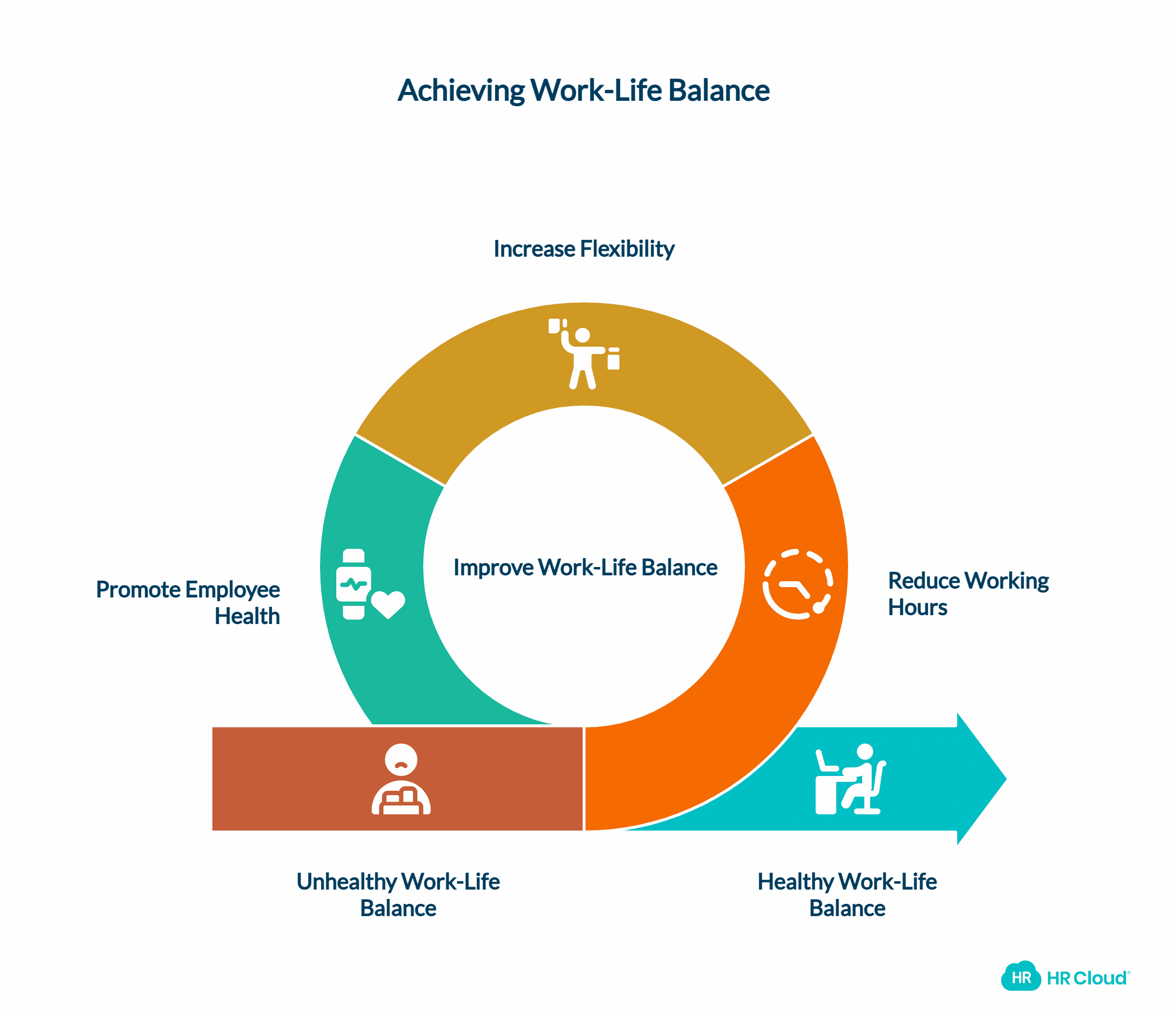
Work-life balance means managing your professional responsibilities and personal life in a way that reduces stress and allows you to be more productive and content in all areas of life. Consequences of an unhealthy work-life balance include:
-
Burnout: Survey results from the UK’s Mental Health Foundation found that 1 in 3 people are unhappy about the time they work, leading to burnout. This highlights the importance of employee health and the need to prevent burnout in the workplace.
-
Low productivity: Research from Britain’s Advisory, Conciliation and Arbitration Service found that employees are more inclined to take absence leave when their life lacks balance. This directly impacts business performance and overall productivity.
-
Decreased job satisfaction: Having a poor work-life balance can result in decreased job satisfaction, higher turnover rates, and absenteeism, per a January 2022 study in the International Journal of Environmental Research and Public Health. This underscores the importance of employee satisfaction in maintaining a healthy work environment and reducing employee turnover.
Signs of an Unhealthy Work-Life Balance
-
Feeling tired all the time, even after resting or on weekends.
-
Spending little to no time on personal relationships, hobbies, or self-care.
-
Getting sick more often can be a sign of lowered immune response due to stress.
-
Displaying short temper and irritability with colleagues, friends, or family.
-
Struggling to stop thinking about work during off-hours or compulsively checking work emails and messages at home.
-
Experiencing insomnia or disrupted sleep patterns, often due to stress or overthinking work-related issues.
-
Productivity levels drop, indicating inefficiency and potential employee burnout.
-
Feeling disinterested in work and other activities that used to be enjoyable.
-
Increasing dependence on substances like alcohol, caffeine, or even overeating.
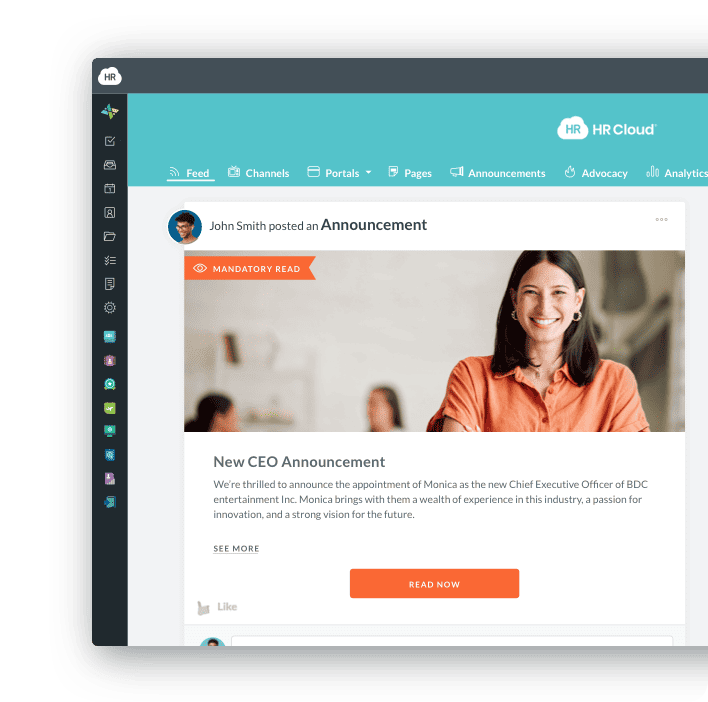
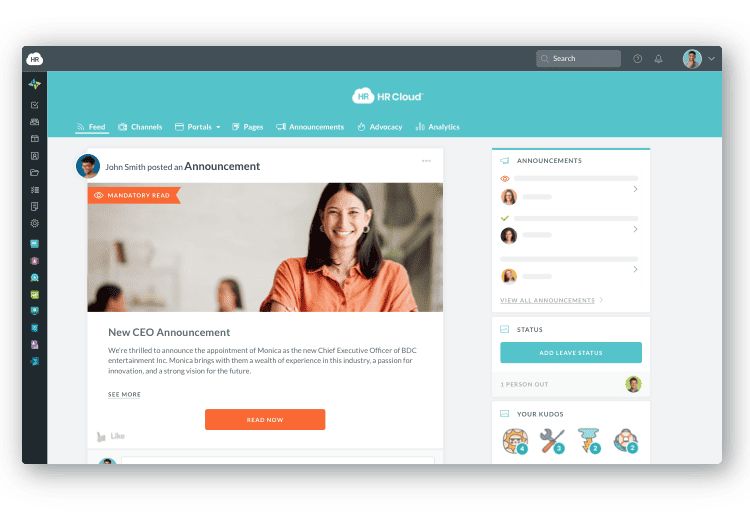
Ways to Improve Work-Life Balance
1. Time Management
Improving time-management skills is essential for maximizing productivity and achieving a better work-life balance. Although it’s easier said than done, the first step is important: Set target tasks and ensure that you finish them throughout the day.
Start by setting clear, achievable goals and breaking larger tasks into smaller, manageable steps. Prioritize tasks using tools like to-do lists or digital planners, and allocate specific times to focus on each task to maintain concentration and take regular breaks. Here are some tools that can help:
-
Technology: Take advantage of the software and apps available, such as calendars, apps, and to-do lists. Apps like Notion, Evernote, and Trello can help you organize your work process. These apps also allow for integration with other apps, which makes it easier for you to keep everything in one place. Some of these tools even offer time-tracking software features to help you manage your working hours more effectively.
-
Planner: Set aside time to organize and review what’s happening in your week. This way, you can cut down on tasks that take up too much time but don’t have a lot of value.
-
Reminders: Set an alarm or reminder for time limits for tasks. Try the Pomodoro Technique: Set a timer for 25 minutes and work on a specific task. Take a short break, then repeat. After every four rounds, take a longer break (15 to 30 minutes).
2. Know Your Priorities 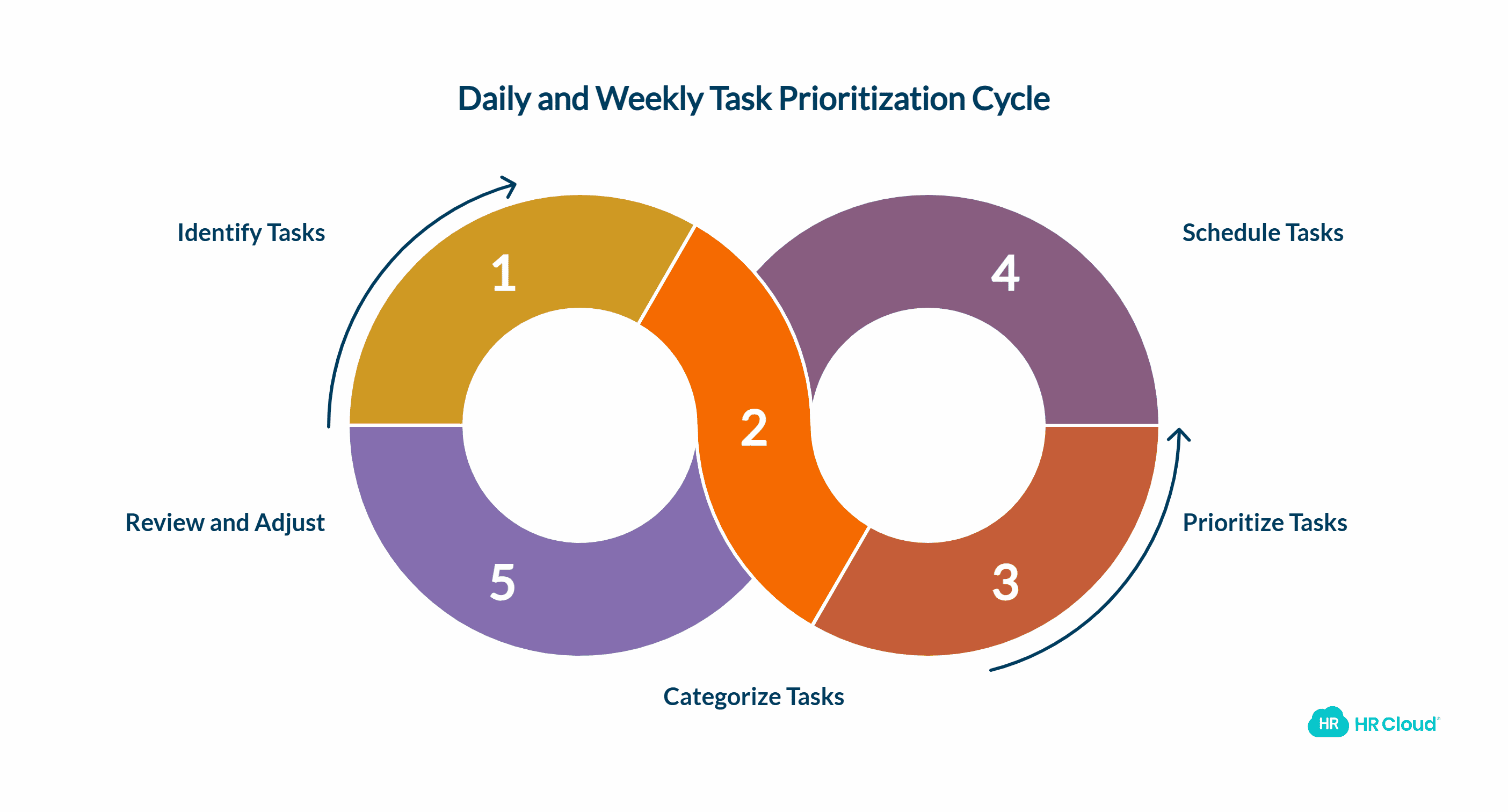
Setting priorities for work tasks effectively throughout the day and week involves a strategic approach to work-life integration. Begin by identifying all tasks and categorizing them based on urgency and importance, using tools like the Eisenhower Box or a simple priority list.
Start each day by reviewing your list and focusing on tasks that are critical and time-sensitive first, while scheduling less critical tasks for later in the day or week when you anticipate having spare time.
It's also helpful to review and adjust your priorities at the end of each day or week to reflect any new tasks or changes in task importance. This method ensures that high-priority tasks receive the attention they need, preventing last-minute rushes and reducing work stress.
3. Establish a Realistic Schedule
Establishing a realistic work schedule starts with you defining your working hours based on your most productive times and the demands of your job. Be realistic about what you can achieve within these hours and set boundaries to protect your personal time.
It’s important to remain disciplined about starting and ending your workday at the same time. Additionally, don't be afraid to unplug completely after work hours—turn off email notifications and resist the urge to check in. This approach supports a healthy work-life balance and helps you disconnect from work when needed. Consider implementing flexible scheduling or flex time to better accommodate your personal needs and improve your overall work-life balance.
4. Set Boundaries
A good work-life balance doesn’t miraculously happen in a snap. It must begin with you setting boundaries and limits on the things you do. Learning how to say “no,” especially when those things do not benefit you, is one part of effective conflict management.
Knowing your priorities can help you set your boundaries, and learning how to say “no” makes it easier to say “yes” to things that are good for you. Examples of these include being able to take breaks and do something you love to do. Setting clear boundaries is crucial for maintaining a healthy work-life balance and reducing stress in both your professional and personal life.
5. Take Breaks
This may sound simple, but it’s easy to skip taking breaks, especially when you’re intensely focused on doing something for work. Make sure that you step away from your desk once in a while, eat on time, drink water to stay hydrated, and get adequate sleep.
Try your best not to skip lunch, away from work. You can even eat lunch with coworkers. Taking these breaks helps you improve your work efficiency and also gives you space to breathe. Regular breaks can lead to improved productivity and reduced stress, contributing to a better overall work-life balance.
6. Use Vacation Days
Aside from taking breaks during your work hours, make full use of your allotted time off. One way to make sure you do this is to plan vacation time in advance, clearly communicating it with your manager. You deserve to have a vacation where you focus on your well-being and relaxation. Utilizing paid vacation time is crucial for maintaining a healthy work-life balance and preventing burnout. Don't hesitate to submit time off requests when you need a break, as this is an important aspect of self-management and maintaining your overall well-being.
7. Create a Flexible Schedule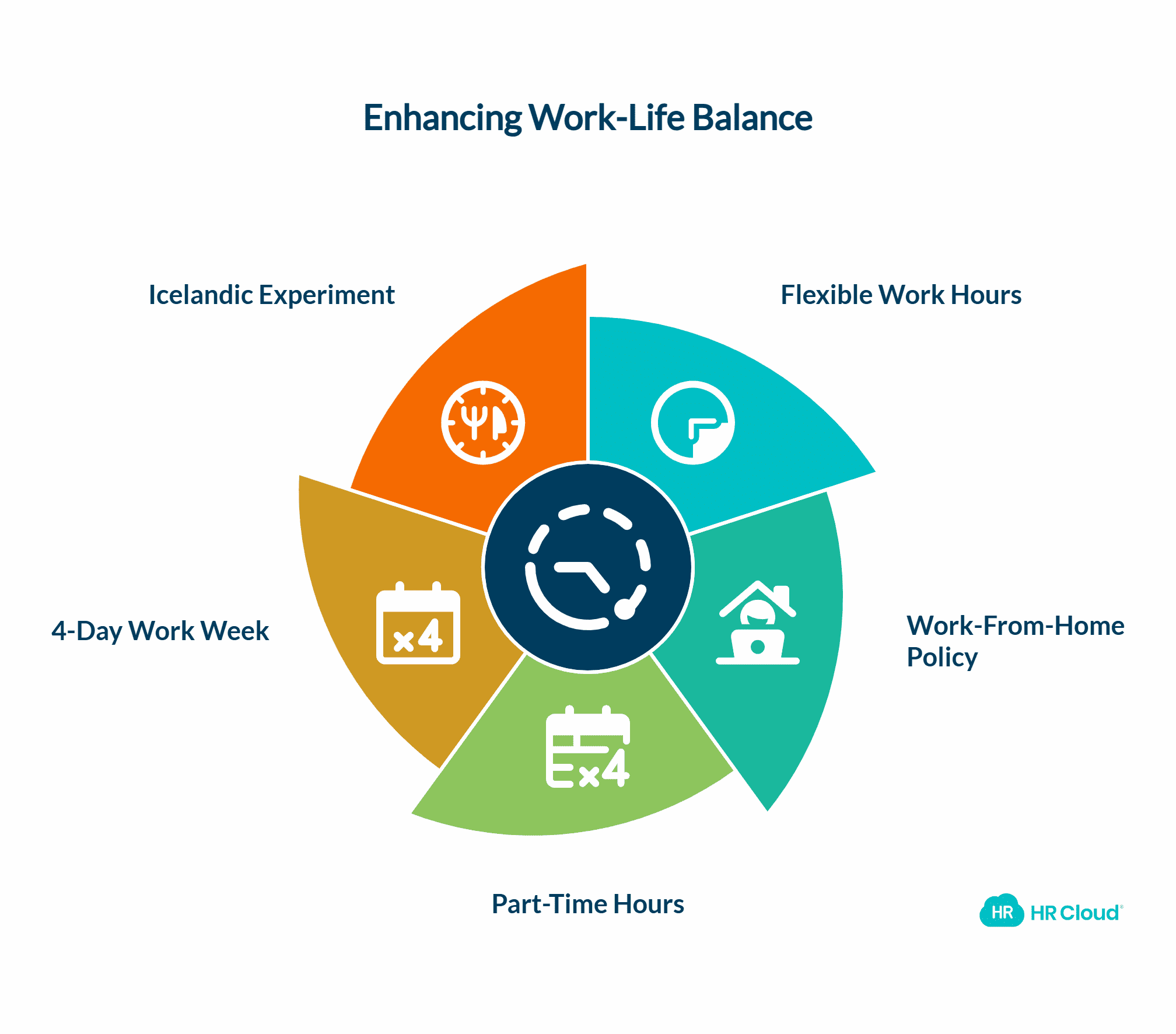
Creating flexible work hours or incorporating a work-from-home policy involves carefully considering the needs of both the business and the employees. Start by evaluating which tasks you can effectively manage remotely and identify the hours you are most productive.
Communicate these insights clearly to your employer, proposing specific flex work hours that ensure you can fulfill your job responsibilities while also attending to personal commitments. Be prepared to discuss how you will manage communication and remain accessible during core business hours for meetings and teamwork.
Alternatively, there are many jobs offering part-time hours, and some companies are even switching to a 4-day work week (staff work 32 hours instead of 40 with no drop in salary).
In 2022, the Icelandic government experimented with a shorter working week, which led to benefits such as increased productivity, being less stressed at home, and better social connections. These flexible work arrangements and flex schedule options can significantly improve work-life balance and employee satisfaction. The flexible schedule meaning can vary between organizations, but it generally refers to work arrangements that allow employees more control over their work hours and location.
8. Find a Job You Love
Take time to reflect on activities that energize you and skills you excel in, and consider how these can translate into a career. Research industries and roles that align with your interests and identify companies whose values resonate with yours.
Networking is also key; connect with professionals in desired fields to gain insights and learn about job opportunities. Consider internships or volunteer positions to test the waters in potential career paths. Finding a job you love can greatly contribute to improved work-life balance and overall life satisfaction. Look for employment opportunities that offer flexible work options and align with your personal values and career goals.
9. Make Time for Family and Friends
Prioritize important family events, social activities, and personal downtime in your calendar, treating them with the same importance as work meetings or deadlines. Dedicated social time provides necessary breaks from work stress and recharges emotional and mental energy, improving focus and productivity when you return to work.
Don’t hold back on requesting time off, but make sure to communicate your availability to your colleagues, and also, resist the urge to check work emails or messages during designated personal times. This approach supports a healthy work-life integration and helps maintain strong personal relationships. Remember, a good work-life balance includes nurturing your family life and personal connections.
10. Exercise and Meditate 
Exercise is one of the most effective stress relievers. It not only benefits your physical health but also your mental health. Exercise boosts your mood, which improves your outlook throughout the day and week.
Meditation and yoga are also beneficial for health and wellness. Start small by doing a quick 5-minute meditation session when you wake up or before you sleep.
Incorporating these practices into your routine can significantly improve your work-life balance and overall well-being. Many companies now offer wellness initiatives as part of their employee assistance programs, recognizing the importance of physical and mental health in maintaining a productive workforce.
11. Cultivate Your Hobbies
Having a good work-life balance isn’t restricted to having more time for your family and friends. It means you have more time for yourself as well. Devote time each week to doing something you love to do, like reading, painting, collecting certain items, dancing, and more.
Sometimes, reaching professional and personal goals isn’t enough to keep us satisfied. Hobbies help improve our quality of life, leading to better mental health and a more balanced approach to work and personal life. Engaging in hobbies can also enhance your adaptability and creativity, which can be beneficial in your professional life as well.
12. Provide Honest Feedback
Giving honest feedback to your employer requires clarity and professionalism, focusing on how certain aspects of your work environment or schedule impact your productivity and overall well-being.
Be specific about the challenges you face, such as excessive work hours or unrealistic deadlines, and propose practical solutions or adjustments that could help alleviate these issues. Communicate openly and constructively, ensuring your feedback is seen as an effort to enhance not only your own performance but also the overall efficiency and morale of the team. This approach can lead to improved employee satisfaction and help create a work environment that respects employee preferences and supports work-life balance. Don't hesitate to discuss flexible work options or the possibility of compressed workweeks if you believe they would benefit both you and the organization.

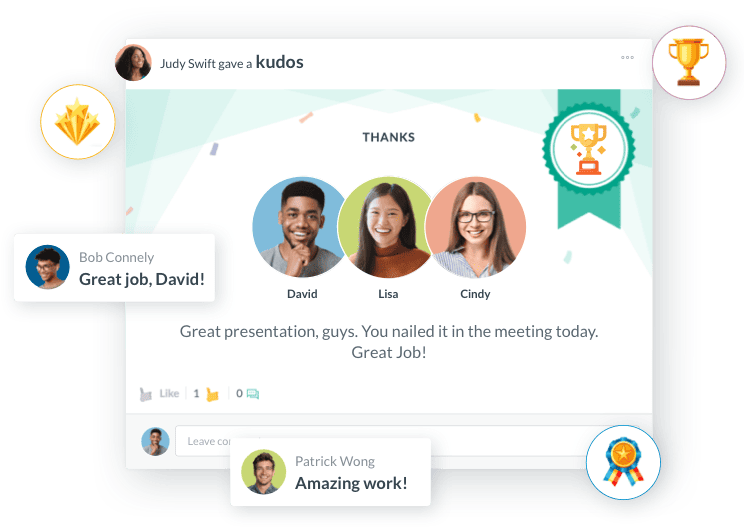
FAQ's
1. What is a healthy work-life balance?
Users often want a clear, modern definition that includes remote/hybrid work environments and practical examples. of work-life integration. A healthy work-life balance involves effectively managing professional responsibilities while maintaining time for personal life, family, and self-care. This can include flexible scheduling, telecommuting options, and clear boundaries between work and personal time
2. How do I know if I have poor work-life balance? Searches around burnout symptoms, emotional fatigue, and constant overwork are high—this aligns well with the "Signs of Unhealthy Work-Life Balance" section above. Key indicators include feeling constantly stressed, neglecting personal relationships, and being unable to disconnect from work during off-hours.
3. What are the best tips to improve work-life balance?
People look for actionable steps, especially involving time management, setting boundaries, and unplugging after work. The tips provided in this article offer practical guidance for achieving improved work-life balance, including creating flexible schedules, prioritizing tasks, and making time for personal activities and relationships.
4. Can remote work help with work-life balance?
Many users are evaluating if WFH or hybrid setups actually support better balance or cause blurred boundaries. Flexible work arrangements can contribute to improved work-life balance when managed effectively. Remote work can reduce commuting stress and allow for more flexible scheduling, but it's important to establish clear boundaries between work and personal time.
5. How does poor work-life balance affect mental health?
This is increasingly searched post-pandemic, tying into stress, anxiety, and workplace burnout discussions. Poor work-life balance can significantly impact employee health and overall well-being, leading to increased stress, anxiety, and potential burnout. It's crucial for both employees and employers to prioritize work-life balance as part of maintaining a healthy and productive workforce.

Keep Reading
Company Culture Software: How to Build a Thriving Workplace in 2026
Ask any business leader what drives lasting organizational success, and you'll hear
45 Boss Day Messages That Actually Mean Something (2026 Guide)
When is Boss Day 2026? Mark your calendar for October 16, 2026 — the annual opportunity
Birthday Wishes for Coworkers: 50+ Messages That Build Workplace Connection
A coworker's birthday isn't just another calendar date—it's a meaningful opportunity to
Like What You Hear?
We'd love to chat with you more about how HR Cloud® can support your business's HR needs. Book Your Free Demo

Build a Culture of Recognition. Boost Engagement. Guaranteed.
Workmates empowers employees to stay informed, connected, and appreciated—whether they’re on the front line, in the office, or remote. Recognition drives 12x higher engagement.Trusted by industry leaders in every sector




Cut Onboarding Costs by 60%.
Take the confusion and follow-ups out of onboarding with automated workflows, digital forms, and structured portals—so new hires ramp faster 3X quicker.Trusted by industry leaders in every sector




